七上Unit7第4课时Section B(2a—3b)
- 格式:doc
- 大小:433.00 KB
- 文档页数:7
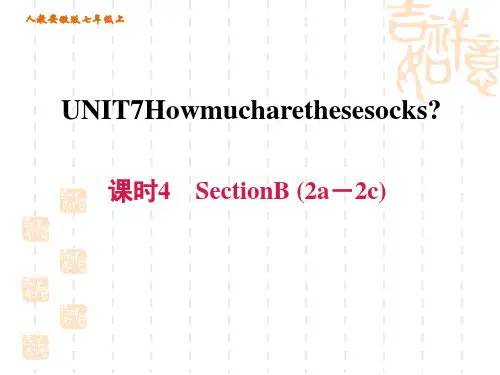
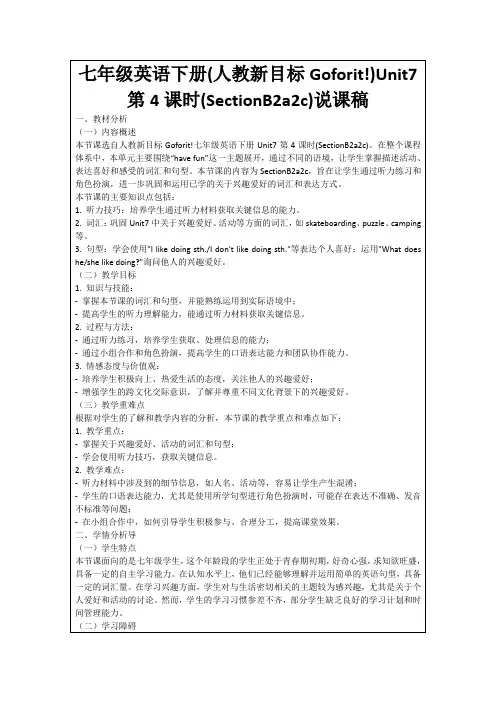
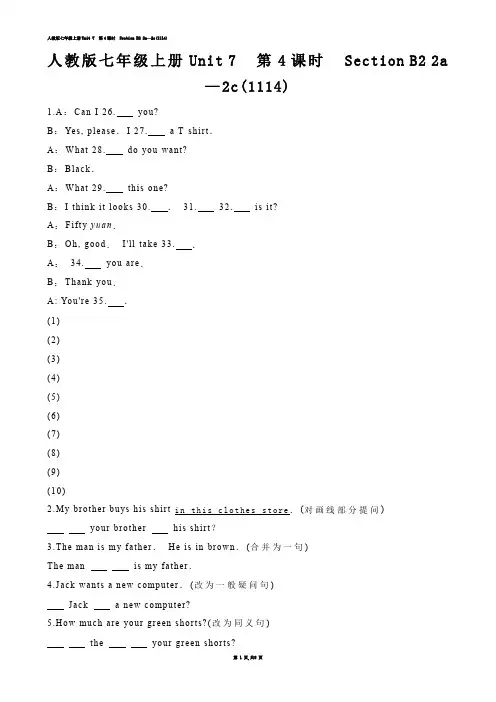
人教版七年级上册Unit 7 第4课时Section B2 2a—2c(1114)1.A:Ca n I 26.yo u?B:Ye s, p le a se.I 27.a T-s h ir t.A:Wh a t 28.d o yo u wan t?B:B la c k.A:Wh a t 29.th is o n e?B:I th in k it loo k s 30..31.32.is it?A:Fif t y y u a n.B:O h, g oo d.I'll ta k e33..A:34.yo u a r e.B:Th a nk yo u.A: Yo u'r e35..(1)(2)(3)(4)(5)(6)(7)(8)(9)(10)2.M y b r o th e r b u ys h is s h ir t in th is c l ot he s s t or e.(对画线部分提问)yo u r b ro th e r h is s h ir t3.Th e ma n is my f a th er.He is in b ro wn.(合并为一句)T h e ma n is my f a th e r.4.J a ck wan ts a n e w c omp u te r.(改为一般疑问句)J a c k a n e w co mp u te r?5.H o w mu ch a re yo u r g r e en s ho r ts?(改为同义句)the yo u r g r e en sh o r ts?6.那个女孩喜欢绿色的衣服。
T h a t g ir l g r e en.7.对于女孩子们,我们有仅售18美元的黄色裙子。
Fo r g ir ls,we h a ve ye llo w on ly $18.8.这些西红柿多少钱?H o w mu c h th e s e9.我们的短裤30元两条。
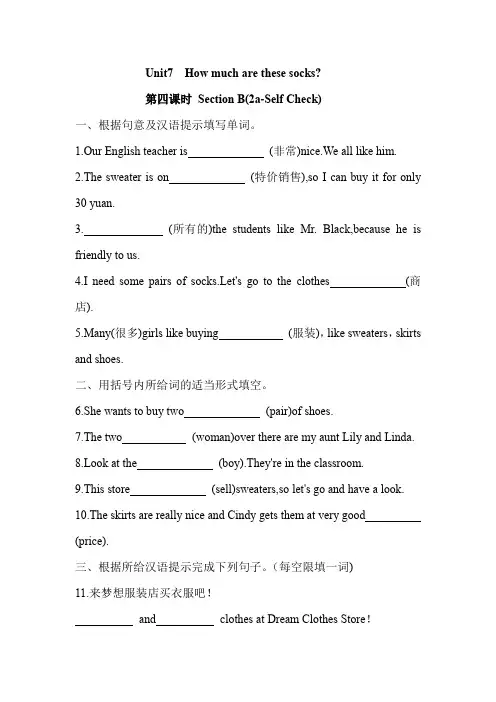
Unit7 How much are these socks?第四课时Section B(2a-Self Check)一、根据句意及汉语提示填写单词。
1.Our English teacher is (非常)nice.We all like him.2.The sweater is on (特价销售),so I can buy it for only 30 yuan.3. (所有的)the students like Mr. Black,because he is friendly to us.4.I need some pairs of socks.Let's go to the clothes (商店).5.Many(很多)girls like buying (服装),like sweaters,skirts and shoes.二、用括号内所给词的适当形式填空。
6.She wants to buy two (pair)of shoes.7.The two (woman)over there are my aunt Lily and Linda.8.Look at the (boy).They're in the classroom.9.This store (sell)sweaters,so let's go and have a look.10.The skirts are really nice and Cindy gets them at very good (price).三、根据所给汉语提示完成下列句子。
(每空限填一词)11.来梦想服装店买衣服吧!and clothes at Dream Clothes Store!12.辛迪想买一双白色的袜子。
Cindy wants to buy white socks.13.我们以非常实惠的价格出售鞋子。
We sell all the shoes . 14.穿着白色衣服的女孩是露西的姐姐。
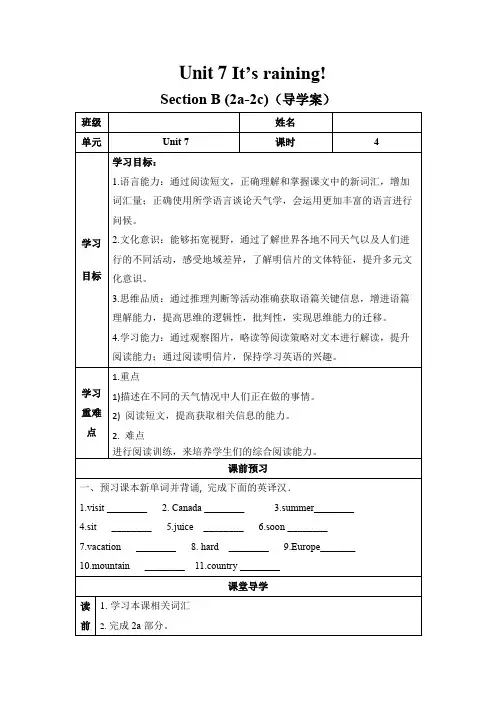
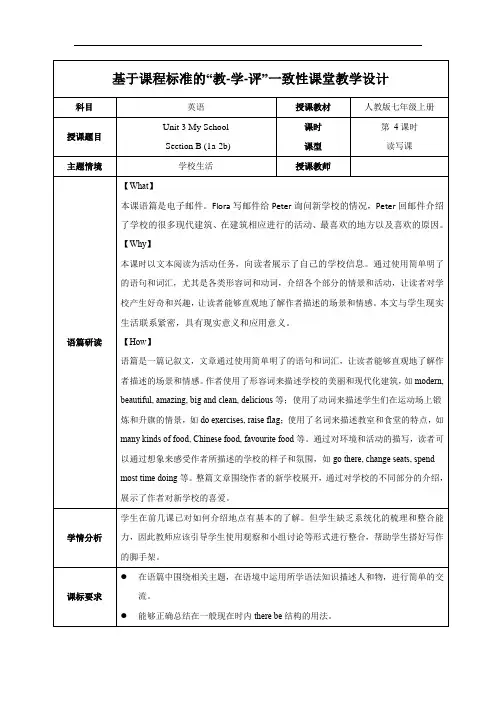
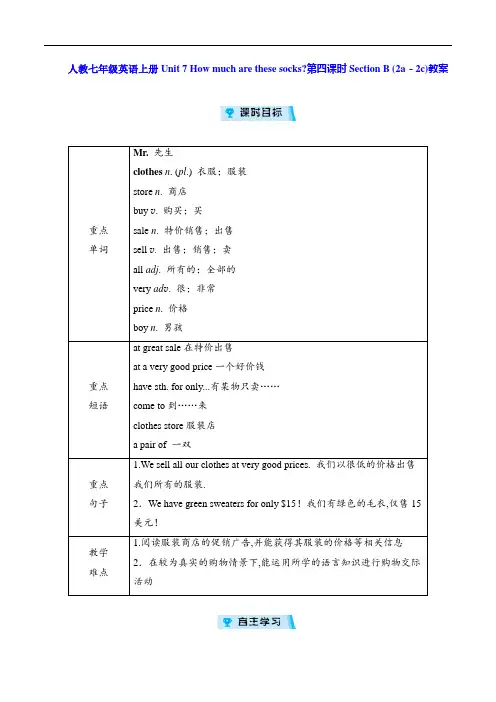
人教七年级英语上册Unit 7 How much are these socks?第四课时Section B (2a-2c)教案重点单词Mr. 先生clothes n. (pl.) 衣服;服装store n. 商店buy v. 购买;买sale n. 特价销售;出售sell v. 出售;销售;卖all adj. 所有的;全部的very ad v. 很;非常price n. 价格boy n. 男孩重点短语at great sale在特价出售at a very good price一个好价钱have sth. for only...有某物只卖……come to到……来clothes store服装店a pair of 一双重点句子1.We sell all our clothes at very good prices. 我们以很低的价格出售我们所有的服装.2.We have green sweaters for only $15!我们有绿色的毛衣,仅售15美元!教学难点1.阅读服装商店的促销广告,并能获得其服装的价格等相关信息2.在较为真实的购物情景下,能运用所学的语言知识进行购物交际活动一、根据句意及首字母或汉语提示写出单词.1.Did you make this shirt or buy it?2.Is the black car for sale?3.The book sells (出售;销售;卖) well.4.All (所有的;全部的) the students brought their snack except Tom.5.What's the price of the beautiful dress?二、写出下列画线短语的汉语意思.1.Come and buy your clothes at our great sale! 在特价出售2.We sell all our clothes at very good prices. 一个好价钱3.We have green sweaters for only $15! 有某物只卖……环节1新课导入T:Do you often go shopping with your parents? Do you know the price of different kinds of things? Discuss with your partner about the prices of the things below.A. a camera B.a watchC. a mobile phone D.a computerE. a TVF. an air-conditionerG. a novel H. a water bottleS1:How much is a camera?S2:I think it's... What about you?S1:I think it's... How much is a watch?...设计意图:以对话的形式直观地引入本课时话题,提高学生的课堂参与积极性.环节2学习2a-2c1.让学生2人一组,互相提问2a左边方框中的物品的价格并用右边方框中的价格回答,将物品与价格配对.2.教师邀请两三组学生当堂表演对话.3.让学生浏览2b的短文,完成练习.4.让学生精读2b的短文,勾出其中的生词、短语及句子.5.教师核对2b的练习答案,并讲解重点词汇及句型.6.让学生假设自己在Mr.Cool's Clothes Store工作,补全2c的对话并与小组同伴练习.7.教师核对答案并邀请两三组学生当堂表演对话.8.要点点拨.Come and buy your clothes at our great sale!本句是一个祈使句,动词用原形.“Come and+动词原形……”意为“来……”,and后的动作紧接着come这个动作发生.例:Come and have a rest. 来休息一下.9.学以致用.(根据汉语意思完成句子)(1)他的妈妈打算给他买一辆新的自行车.His mother is going to buy a new bike for him.(2)我们的服装正在特价销售.Our clothes are at great sale.(3)你可以把书卖给他们.You can sell the books to them.(4)他们正在以高价销售西红柿.They're selling tomatoes at a high price.设计意图:培养学生的综合阅读能力以及对知识点的熟练掌握和运用能力.Unit 7How much are these socks?Section B (2a-2c)buy,sale,sell,all,very,price,at great sale,at a very good price,have sth. for only…We sell all our clothes at very good prices.We have green sweaters for only $15!请完成本课对应训练!。
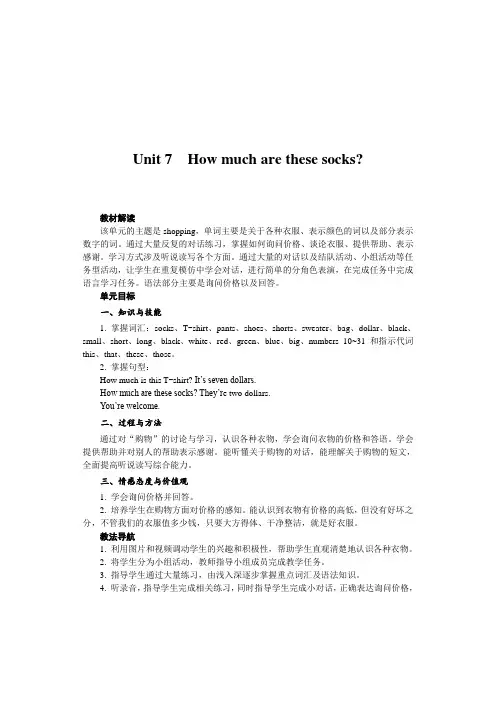
Unit 7 How much are these socks?教材解读该单元的主题是shopping,单词主要是关于各种衣服、表示颜色的词以及部分表示数字的词。
通过大量反复的对话练习,掌握如何询问价格、谈论衣服、提供帮助、表示感谢。
学习方式涉及听说读写各个方面。
通过大量的对话以及结队活动、小组活动等任务型活动,让学生在重复模仿中学会对话,进行简单的分角色表演,在完成任务中完成语言学习任务。
语法部分主要是询问价格以及回答。
单元目标一、知识与技能1. 掌握词汇:socks、T-shirt、pants、shoes、shorts、sweater、bag、dollar、black、small、short、long、black、white、red、green、blue、big、numbers 10~31和指示代词this、that、these、those。
2. 掌握句型:How much is this T-shirt? It’s seven dollars.How much are these socks? They’r e two dollars.You’re welcome.二、过程与方法通过对“购物”的讨论与学习,认识各种衣物,学会询问衣物的价格和答语。
学会提供帮助并对别人的帮助表示感谢。
能听懂关于购物的对话,能理解关于购物的短文,全面提高听说读写综合能力。
三、情感态度与价值观1. 学会询问价格并回答。
2. 培养学生在购物方面对价格的感知。
能认识到衣物有价格的高低,但没有好坏之分,不管我们的衣服值多少钱,只要大方得体、干净整洁,就是好衣服。
教法导航1. 利用图片和视频调动学生的兴趣和积极性,帮助学生直观清楚地认识各种衣物。
2. 将学生分为小组活动,教师指导小组成员完成教学任务。
3. 指导学生通过大量练习,由浅入深逐步掌握重点词汇及语法知识。
4. 听录音,指导学生完成相关练习,同时指导学生完成小对话,正确表达询问价格,回答,提供帮助,感谢他人。
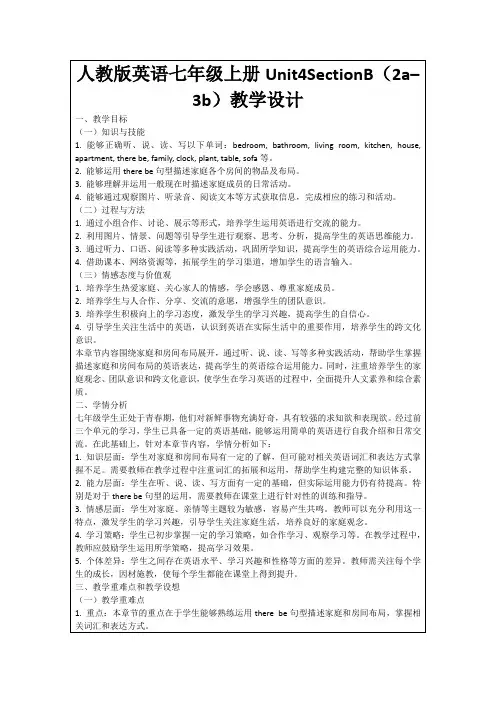
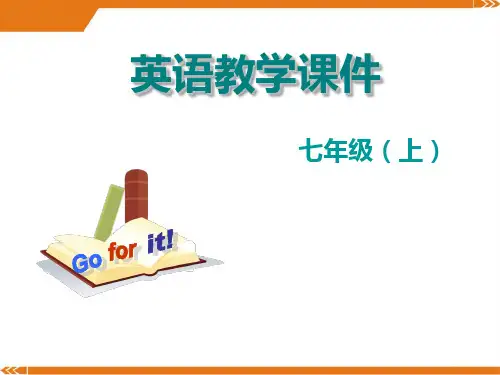
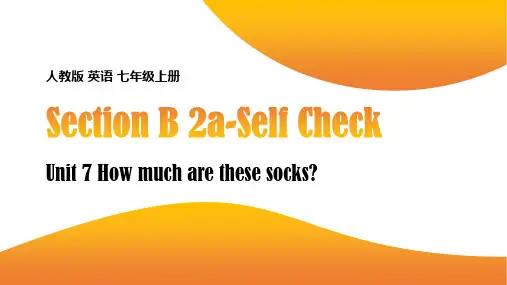
1.What’s your class timetable today? Write down the subjects.1.Let’s look at others’ information on the message board.①Where is the text from?____________________________________________________________②What’s the topic of the text?____________________________________________________________③What can you see on the message board?____________________________________________________________2.What can you predict from their usernames?____________________________________________________________3.1b Read the message board about the students’ favourite subjects. Underline all the school subjects each student has.____________________________________________________________________________________________________________________________________________________________________________________4.1c Read again and complete the table.5.Read again and answer the questions.① What subjects do Mike and Binbin both have?____________________________________________________________② How does Mike feel about music?____________________________________________________________③ What does Wu Binbin learn in his maths class?____________________________________________________________④Do you like music or maths? Why?____________________________________________________________6.Read again and complete the mind map.1.2a Discuss the following questions in groups and complete the mind map with your own2.2b Write a message using your information and post it on the board.3.Let’s thinkWhy do we have to learn so many subjects?What can you learn from different subjects ?____________________________________________________________一、用所给词的适当形式填空【参考答案】1.Watch the video and find out Sherry’s class timetable.2.Fill in Sherry’s class timetable1.What’s your class timetable today? Write down the subjects.1.Let’s look at others’ information on the message board.①Where is the text from?They are two posts(帖子)from the Internet.②What’s the topic of the text?Maybe they are about different subjects.③What can you see on the message board?There are two users.Mike Davis and Wu Binbin.2.What can you predict from their usernames?Maybe Mike’s favourite subject is music.Maybe Wu Binbin’s favourite subject is math.3.1b Read the message board about the students’ favourite subjects. Underline all the school subjects each student has.4.1c Read again and complete the table.5.Read again and answer the questions.① What subjects do Mike and Binbin both have?Maths,history,English,and IT.② How does Mike feel about music?Music always makes him happy.③ What does Wu Binbin learn in his maths class?He learns how to work out maths problems in class.④Do you like music or maths? Why?I (don’t) like music/maths because...6.Read again and complete the mind map.1.2a Discuss the following questions in groups and complete the mind map with your own。
⼈教新⽬标英语七年级上册Unit7全单元导学案(⽆答案)⼈教新⽬标英语七年级上册Unit 7 How much are these pants?师⽣备注第1课时Section A (1a—2e)【学习⽬标】:询问价格;谈论⾐物;提供帮助;感谢他⼈1. 知识⽬标:(请注明重点词汇、重点句型的汉语意思)掌握重点词汇:help want welcome examplebig small short long womanneed look pair take重点句型:⑴Can I help you? ⑵Yes, please.⑶What color do you want? ⑷Here you are.⑸I will take it. ⑹You’re welcome.【预习指导】:⼀、通过1a预习写出下列⾐物的英⽂名称。
T-恤衫袜⼦短裙鞋⼦包裤⼦帽⼦⽑⾐短裤美元⼆、英汉互译。
试着翻译下⾯的⼩对话。
(1)-How much is this T-shirt? _____________________________-It’s seven dollars. _____________________________(2)-这顶帽⼦多少钱?____________________________-5美元。
_____________________________(3)-How much are these T-shirts? ________-They are ten dollars. _____________________________(4)- 这些书多少钱?____________________________-20元。
_____________________________Explanation:1.how much⽤于提问某物的价格,意为“多少钱”,其句式为“+主语?”当主语是不可数名词或可数名词单数时,be动词⽤is,答语为It’s+数额;当主语是可数名词复数时,be动词⽤are,答语为They’re+数额。
Unit 7Happy Birthday!Period 4 Section B (1a-2b)一、教材分析What: 本课时内容主要分为两部分,第一部分为阅读训练,主要语篇为来自网络论坛的两篇帖子。
在内容方面,两篇帖子都介绍了主人公的生日日期和庆祝生日的方式,帖子最后邀请读者分享庆祝生日的有意义方式。
这两个语篇分别体现出不同文化背景下人们庆祝生日的传统习俗。
第一个发帖人Yu Xiaoming过生日吃长寿面和鸡蛋,这是中国人庆祝生日的传统方式。
跟帖人Judy Clark过生日时吃蛋糕、唱生日歌、许愿、吹蜡烛,这是西方国家过生日的传统方式。
第二部分为写作训练,结合自身情况完成思维导图,并在此基础上完成一篇完整的回帖。
Why:第一部分通过两篇主题论坛的帖子,向学生展示了中西方庆祝生日的不同方式。
尽管世界各地庆祝生日的方式不同,但生日庆祝背后都蕴含着大家相同的情感追求:表达祝福和爱,纪念成长。
这正是我们庆祝生日的意义所在。
语篇同时也传递了更深层次的理念:世界文化是多元的,但人类的情感是共通的,这些共通的情感为不同文化背景下人们互相理解和沟通创造了基础。
第二部分用思维导图形式梳理要点,并结合模板完成一篇完整的回复帖子。
How:两篇帖子都介绍了主人公的生日日期和庆祝生日的活动,还分别分享了个性化的庆祝方式,最后邀请读者分享庆祝生日的有意义方式。
语篇模仿网络论坛网页样式,细节完整,属于典型的新媒体语篇范畴。
语篇涉及描述生日活动的核心语言如My birthday is on...I like doing...because...也涉及表达寻求意见的句型Any good idea? 写作练习中用思维导图形式帮助梳理要点,并给出了回帖模板,使同学只需要填入个人信息即可,简化写作流程,降低写作难度。
二、教学内容1. 应用文语篇的主要写作目的、结构特征、语言特点等。
2. 梳理、分类、匹配信息。
3. 讨论学生对如何庆祝生日的想法。
Unit7 How much are these socks?
第4 课时Section B(2a—3b)
Teaching goals:
Students learn to talk about clothes and prices. By learning, they can make their own dialogues about shopping and write an ad for their own clothes stores.
Teaching steps:
Step1 Revision and leading-in
1.Revise the numbers from 1 to 30 by the game “眼疾口快”.
2. Get students to show their own shopping dialogues.
A: Can I help you?
B: Yes, please. I need …
A; What color do you want?
B: …
…
A: Here you are .
B: Thank you.
A: You are welcome.
T: How much do you think these things cost? Match each clothing item with a price.(2a)
设计意图:通过复习数字及购物对话,自然导入新课,表达本课主题 Step2 Learning 2b 1 .Fast-reading
The main idea of the passage is about ___________. A. clothes in great sale
B. the prices of the clothes at Mr Cool ’s Clothes Store
C. Socks at Mr Cool ’s Clothes Store 2. Careful reading
Read the ad and fill in the price tags and then check the answers.
3. Inquiry into knowledge by translation
(1)Come and buy your clothes at our great sale!我们在大甩卖,快来买衣服吧!祈使句常用来表示说话人的愿望、意志、请求、警告、命令、号召获建议等,其主语you通常省略。
否定形式是在肯定结构前加don’t.
__ _____ open the door. It’s cold(冷) outside。
A. Not
B. Not to
C. Don’t
D. Isn’t
buy用作动词,意为“买”,常用短语为:buy sb. sth./buy sth. for sb.意为“给某人买某物”。
我想给我妈妈买件毛衣。
I want to buy a sweater for my mother.
= I want to buy my mother a sweater.
(2)We sell all our clothes at very good prices.我们卖的所有衣服都很优
惠price 是名词,意为价格,价钱
这本书多少钱?
What’s the price of this book?=How much is this book?
How much is your new bag?=What’s the price of your new book?
4. Listening and reading
Play the tape for students to listen and then have them practice reading.
5. Filling in blanks and practicing
Get students to fill in the blanks and then practice in pairs.(2c)
You: Hello, can I help you?
Girl: Yes, please. I need a skirt.
You: How about these purple skirts.
Girl: Oh, I like this one. How much is it?
You: It’s only 20dollars. Girl: Oh, good. I’ll take it.
You: And what do you need?
Boy: Well, I need a pair of black shoes for school
You: What about this pair? They are only twenty-eight dollars.
Boy: Great. And do you have shorts, too?
You: Yes, our shorts are only 16 dollars.
Boy: OK. I’ll take the shoes and the shorts.
6.Post-reading
(1) Retell the passage according to the forms above.
(2) Complete the passage without looking at 2b.
Mr Cool’s Clothes Store
Come and buy your clothes at our great sale! We sell all our clothes at very good prices. Do you like sweaters? We have red and green sweaters for only $15! Yellow sweaters are only $12! Do you need trousers? For boys, we have black trousers for only $22. And shorts are only $16! For girls, we have skirts in purple for only $20. How much are our jackets? Only $30! And we have black shoes for only $28. Socks are only $2 for three pairs!Come to Mr. Cool’s Clothes Store now
设计意图:充分利用任务型教学模式:阅读大意---阅读细节---翻译探究---仿读原文---朗读原文---引导背诵---学生仿写,让学生们对所学内容理解掌握并能灵活运用。
Step3 Summary
What do you learn in this lesson?
Get students to talk about in pairs and sum up together. Step4. The end-of class test
Look at the things in the picture. Fill in the blanks in the ad in 3a. Have two students share their answers.
Step 5 Homework:
1. Retell the passage in 2b.
2. Finish off 3b
设计意图: 要求学生自己写一则小广告,巩固所学知识的同时又能训练和提高学生的写作能力。
Huaxing Clothes Store
Do you like _______? We have _______ for only _____ yuan. How much are our ________? Only _____ yuan. And the red _______ are ______ yuan.
亮点:购物这一话题与学生的日常生活息息相关,把生活常识巧妙带进课堂,学生非常感兴趣,乐意学并积极参与训练,课堂气氛热烈。
通过让学生读取文章大意和读取细节,让学生加深记忆。
提高学生的英语阅读能力。
使用建议:在展开课堂教学的过程中,老师尽量用幽默风趣的语言,让学生轻松愉快接受知识。
这样有利于调动学生的积极性,学生想参与了,这样才能使场景活动很好的开展。